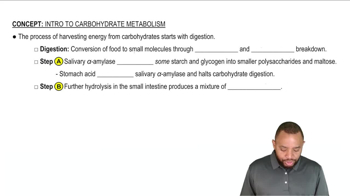Explain whether the following blood types could be donated to a person with type B blood:
(a) A
 Verified step by step guidance
Verified step by step guidance Verified video answer for a similar problem:
Verified video answer for a similar problem:



 1:24m
1:24mMaster Polysaccharides Example 1 with a bite sized video explanation from Jules
Start learning